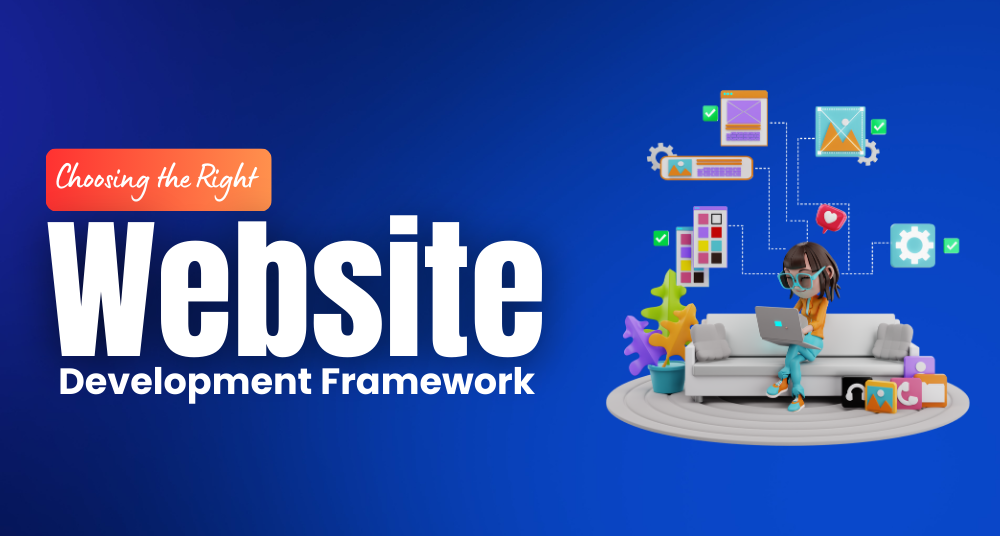Website development is an essential aspect of any online business, whether you’re creating a personal blog, an e-commerce store, or a corporate website. In the digital world, your website is often the first point of interaction between your brand and your audience. It’s not just a platform to share information; it’s an experience that can build trust, convert visitors into customers, and grow your business.
Creating a website involves various stages—from initial ideation and design to development, testing, and eventual launch. As part of establishing topical authority in the field of website development, this guide will walk you through each step of the process, providing comprehensive insights, best practices, and tips that you can use to create a high-performing, secure, and visually appealing website.
Understanding Website Development
Before diving into the technical aspects, it’s important to understand what website development actually entails. Website development is the process of creating and maintaining a website, including tasks such as web design, web programming, database management, and server configuration. Development can be categorized into two main parts: front-end development (the part users interact with) and back-end development (the server-side processes that power the website).
As a business or individual looking to develop a website, it’s essential to approach the process methodically, ensuring that every aspect—from aesthetics to functionality—aligns with your goals.
The Planning Phase: How to Define Your Website’s Purpose
The first step in creating a website is planning. Defining the purpose of your website is crucial, as it sets the direction for every other phase of development.
Ask yourself the following questions:
What is the primary goal of your website?
- Are you selling products (e-commerce)?
- Is it a blog or portfolio to showcase work?
- Is it a corporate website with information about your services?
Who is your target audience?
Understanding your audience will guide the design, functionality, and content strategy.
What key features does your website need?
Consider forms, contact pages, search functionality, e-commerce integration, etc.
Once you have clear answers to these questions, it will be much easier to plan out the design, content, and development process for your website.
Choosing the Right Website Development Approach
Website development can take different forms depending on your needs and the complexity of the site you want to build. Here are the three most common approaches:
Custom Development
Ideal for businesses with unique needs that can’t be fulfilled by standard website templates. Custom websites are tailored to your brand and offer the highest level of flexibility and scalability.
Content Management Systems (CMS)
CMS platforms like WordPress, Joomla, and Drupal are user-friendly and allow non-developers to manage and update content easily. These platforms also offer pre-built themes, plugins, and integrations to speed up the development process.
Website Builders
Tools like Wix, Squarespace, GoDaddy, Webflow, Weebly and Shopify are perfect for users with limited technical knowledge. They offer drag-and-drop functionality and ready-to-use templates, making the development process much quicker.
Your choice of approach depends on factors such as your budget, timeline, and long-term goals.
Designing Your Website: UI/UX Best Practices
The design phase plays a pivotal role in ensuring that your website is both functional and appealing to users. UI/UX (User Interface / User Experience) design focuses on the interaction between the user and the website, and it’s critical for ensuring that visitors can easily navigate the site.
Here are some design best practices:
Consistency: Use a consistent color scheme, typography, and layout throughout the website.
Mobile-First Design: With more users accessing websites from mobile devices, it’s crucial to design for mobile first, then scale up for desktop versions.
User-Centered Design: Keep the user’s needs and goals at the forefront. The navigation should be intuitive, and calls-to-action (CTAs) should be clear.
Speed Optimization: Design for fast load times. Heavy graphics and unnecessary animations can slow down the website, which could negatively affect the user experience and SEO.
Accessibility: Ensure that the design follows WCAG (Web Content Accessibility Guidelines) to accommodate users with disabilities.
Website Development Frameworks and Tools
A wide variety of frameworks and tools are available to make website development more efficient. Choosing the right tools can help streamline the process and ensure the site is scalable, maintainable, and performant.
Some of the popular development frameworks and tools include:
Front-End Frameworks: React, Angular, and Vue.js are all popular front-end JavaScript frameworks for building dynamic, interactive user interfaces.
Back-End Frameworks: Node.js, Django, Ruby on Rails, and Laravel are commonly used back-end frameworks that help structure server-side logic and database interactions.
Full-Stack Frameworks: Some frameworks, like MERN (MongoDB, Express.js, React, Flutter & Node.js), provide both front-end and back-end components, making them great for full-stack development.
Additionally, tools like Git (for version control), Docker (for containerization), and Jenkins (for continuous integration and deployment) are essential in modern web development.
The Coding Phase: Front-End and Back-End Development
Once the design is finalized, it’s time to start coding. This phase can be divided into two main components:
Front-End Development
This refers to the part of the website that users interact with. It includes everything from the layout to the images and animations. The main languages used here are HTML, CSS, and JavaScript. Front-end frameworks like React or Vue.js can make it easier to build responsive and interactive user interfaces.
Back-End Development
This is the server-side of the website that handles data storage, business logic, and security. It involves writing code that interacts with databases, APIs, and server configuration. Common back-end languages include Python, PHP, Java, and Node.js.
Implementing Content Management Systems (CMS)
For many websites, a Content Management System (CMS) is essential for easily managing and updating content. CMS platforms allow users to create, edit, and organize content without needing to know code.
Popular CMS platforms include:
WordPress: The most widely used CMS, with a user-friendly interface, vast plugin library, and strong community support.
Joomla and Drupal: These are more flexible and powerful CMS options for developers who need more control.
Shopify: A leading CMS for e-commerce websites.
Choosing the right CMS depends on your specific needs, such as the type of content you’ll be publishing and the level of customization you require.
SEO Considerations for Website Development
Search Engine Optimization (SEO) is critical for ensuring your website ranks well in search engines like Google. Optimizing your site during development can save time and effort in the long run.
Some SEO best practices for website development include:
Mobile-Friendly Design: Google uses mobile-first indexing, meaning the mobile version of your site is what matters most for SEO.
URL Structure: Use descriptive, keyword-rich URLs that are easy for both users and search engines to understand.
Site Speed: Google considers site speed as a ranking factor. Optimize images, minimize code, and leverage caching to speed up your site.
Alt Text for Images: Ensure every image has descriptive alt text to improve accessibility and help search engines index your content.
Ensuring Website Security: Best Practices
Website security is one of the most critical aspects of development. Websites are vulnerable to cyberattacks, and an unsecured site can result in data breaches, loss of trust, and legal implications. Here are some security measures to take:
SSL Certificates: Secure Sockets Layer (SSL) certificates encrypt the data transmitted between your website and its visitors, ensuring that information like credit card details and personal data is safe.
Regular Updates: Keep your website’s software, plugins, and dependencies up to date to patch known vulnerabilities.
Two-Factor Authentication (2FA): Implement 2FA to enhance security for users and administrators.
Firewalls: Use a website firewall to prevent malicious traffic from reaching your site.
Testing and Quality Assurance
Testing is essential to ensure your website works as expected across different devices, browsers, and screen sizes. This includes:
Functional Testing: Ensure all links, forms, and buttons work correctly.
Cross-Browser Testing: Test your website on popular browsers like Chrome, Firefox, Safari, and Edge.
Mobile Testing: Ensure that your website is responsive and functional on mobile devices.
Performance Testing: Test for website speed and load times, especially during high traffic periods.
Security Testing: Conduct vulnerability scans to identify potential security risks.
Website Launch: Going Live and Beyond
The moment you’ve been waiting for—launch day! But before you make your website live, there are a few final checks:
Backup Your Website: Always create a full backup of your site before launching.
Final SEO Check: Ensure that all SEO elements are in place—meta tags, alt text, keywords, etc.
Analytics Setup: Set up tools like Google Analytics to track visitor behavior and performance.
Announce the Launch: Promote your new website across social media, email newsletters, and other marketing channels.
Post-Launch: Maintenance, Updates, and Scaling
After launch, your work isn’t done. Continuous maintenance is key to keeping your website secure, up to date, and functioning at peak performance. Regularly update content, fix any bugs that arise, and consider expanding your site’s features as your business grows.
Frequently Asked Questions [FAQ’S]
What are the most common website development mistakes to avoid?
Common mistakes include neglecting responsive design, overlooking SEO during development, slow page load times, and ignoring website security. Failing to test thoroughly across devices and browsers also leads to poor user experiences.
How does website accessibility impact SEO and user experience?
Website accessibility ensures that all users, including those with disabilities, can navigate the site. It enhances user experience, increases engagement, and is a ranking factor for SEO, as search engines favor accessible sites with proper alt text and keyboard navigation.
Why is mobile-first design critical for modern websites?
With mobile traffic surpassing desktop, designing mobile-first ensures your website is optimized for smaller screens and touch interactions. This improves user experience and is favored by search engines for higher rankings in mobile search results.
How can website security best practices protect against cyber threats?
Implementing SSL certificates, regular software updates, firewalls, and two-factor authentication enhances security. These practices protect sensitive user data, prevent cyberattacks, and build trust with visitors, safeguarding your website’s reputation.
What key metrics should you track post-launch to measure website success?
Important metrics include website traffic, bounce rate, conversion rate, page load speed, and user engagement. Analyzing these KPIs helps refine content, design, and overall performance to achieve business objectives.
Related Blog: Top Website Development Companies in India
Conclusion
Website development is a complex, multi-step process that requires a blend of creativity, technical skill, and business understanding. By following a structured approach—from concept to launch and beyond—you can ensure your website not only meets your business goals but also delivers an exceptional user experience. This guide has provided an in-depth look at every aspect of the process, helping you take the right steps toward creating a successful, high-performing website.
By mastering these principles and staying on top of the latest web development trends, you can position your website as a leader in its field, driving traffic, engagement, and conversions for years to come.






What do you think?
It is nice to know your opinion. Leave a comment.